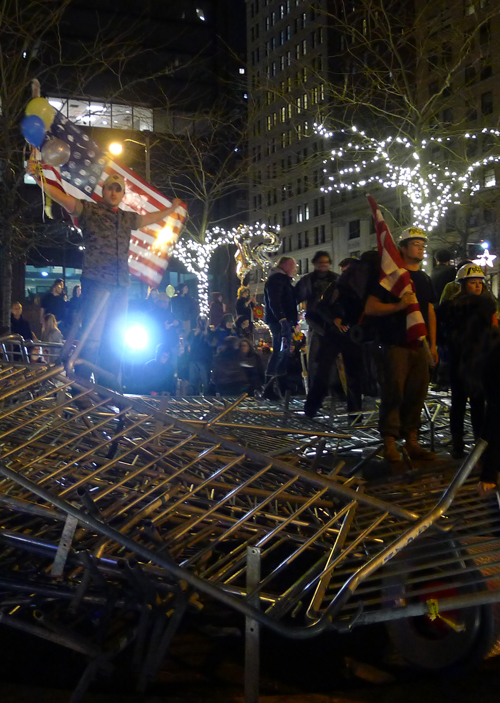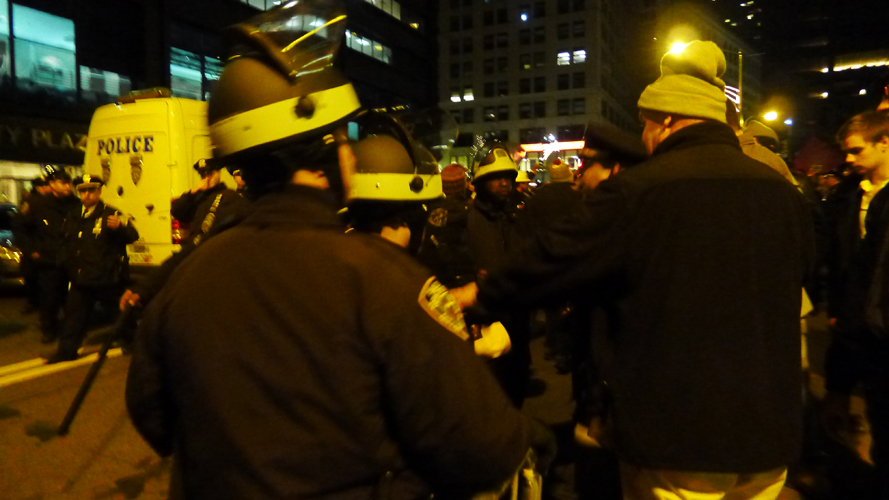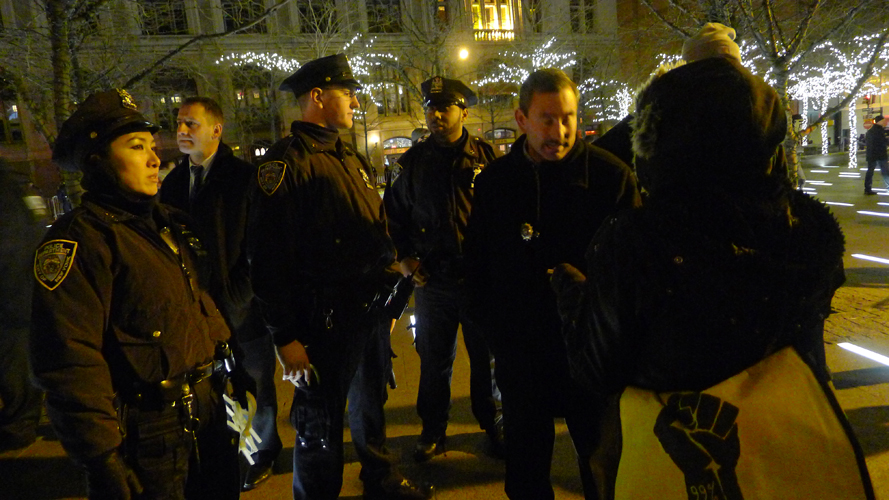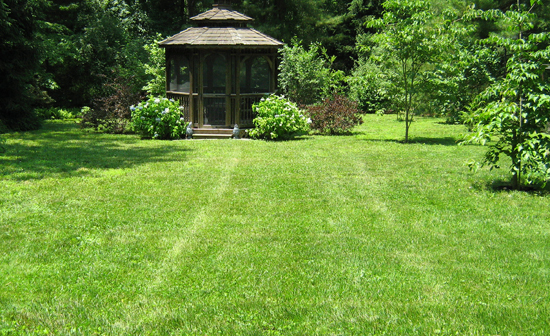Uncategorized
 This Is What 2012 Looks Like
This Is What 2012 Looks Like
by Ayesha Adamo
This is what 2012 looks like, in case you were wondering. I spent my New Year’s Eve in Liberty Square here in New York, ready to occupy the New Year. If you were there, then you know. If you weren’t, then let me tell you that as I watched the team from Direct Action swoop in and pull barricades down, winning a tug-of-war against the cops who were outnumbered for once, thanks to the festivities in Times Square, I knew that this was the best New Year’s Eve of my life.
I knew it even more so as I, with my fellow occupiers, climbed the great pile of barricades that the people had tossed into the middle of the park. We stood on top, looked out over the sea of faces that had gathered, and shook the ground. And you could just tell—the myths are finally here: this is what 2012 was always meant to be. This is what I’ve been waiting for all my life.
Later the NYPD battalions in riot gear would descend upon the park, kicking out the few of us who decided not to go on the march to the East Village, but it was already too late: the ground had already been shaken and the barricades had already toppled. The symbol, the ritual, had already been completed, set into motion…the magick button had been pressed and no matter how many arrests were made that night, nothing could change it. Standing outside the 9th Precinct at 4 in the morning to cheer our warriors as they exited the paddy wagon, and get an idea of names to pass on to the National Lawyers Guild, the night was winding down, but with the knowledge that nothing was over. Far far from it. Viva la revolución! Viva 2012!
 Last Night at Liberty…
Last Night at Liberty…
I wasn’t there, but my good friend Stephen Boyer was. Acts of brutality from the Mayor and the police such as this only clean the stage for great stories of heroism. This is one of them:
http://minorprogression.com/2011/11/15/emotional-night-in-liberty-square/
 Trigger93: FLESH! out now!
Trigger93: FLESH! out now!
 Where the Grass is GREENer
Where the Grass is GREENer
by Connie Adamo (guest blogger and Ayesha’s Mom)
I have a little place not too far from the Jersey Shore and have gardened for a number of years. I love the extraordinary variety and abundance of life in my yard. Over the years, using sustainable practices, I have been able to create a little haven.
Today I will talk about having a green lawn without poisoning the environment and killing wildlife – a place where children can play without becoming contaminated by truly frightening pesticides, herbicides and fertilizers – a lawn that can be maintained with very little, if any, watering.
First, it is important to know your growing conditions, i.e. your area of the country, local soil conditions (in your yard) and the amount of light the area receives. I find that careful observation is a great help here. You may also contact your county soil conservation office and many universities have a cooperative extension service that can help with soil testing if you need it. Once you have an idea of what your conditions are and make soil amendments if needed, you should seed with grasses that will thrive in those conditions. In my area, which is Zone 7 and the Northeast, the following grasses are usually successful: fine fescues, red chewing fescues and hard fescues with a small dose, maybe 15%, of perennial rye grass. There are many seed mixtures that contain these grasses. I also include white clover and a happy collection of volunteer greens and assorted acceptables, which can be any low growing ground cover that doesn’t look awful and blends.
My yard is large with varied conditions. I use fescues and white clover near the house, and towards the back, which is quite sunny, I use the grasses and clover mixed with buttercup, wild strawberry, violets, and gill-over-the-ground. I even include a few dandelion and plantain. Having this variety of grasses and plants helps to prevent disease and pests that monoculture invites.
Fertilizing my lawn is usually done twice a year, spring and fall, although it can be less, as it is important not to overfeed. Organic fertilizers are available at many garden centers and in catalogs. Some choices may be dehydrated cow manure, compost and corn gluten meal. Corn gluten meal can be used as a pre-emergent herbicide for crabgrass and broadleaf weeds you may not want. If using corn gluten meal, apply four to six weeks after sowing seeds. I usually overseed with grass and clover in spring and/or fall. I just throw it around where the lawn seems to need it.
With regards to mowing, mow between 3 and 4 inches high and leave the clippings on the ground to fertilize the grass. Mowing high will protect the grass and cut down on watering. Watering should not be necessary unless there are extraordinary conditions. The lawn may go dormant but it will be just fine.
There are also many other earth friendly ways to landscape your space and create a backyard that is busy with life and beauty, but that would be another topic.







